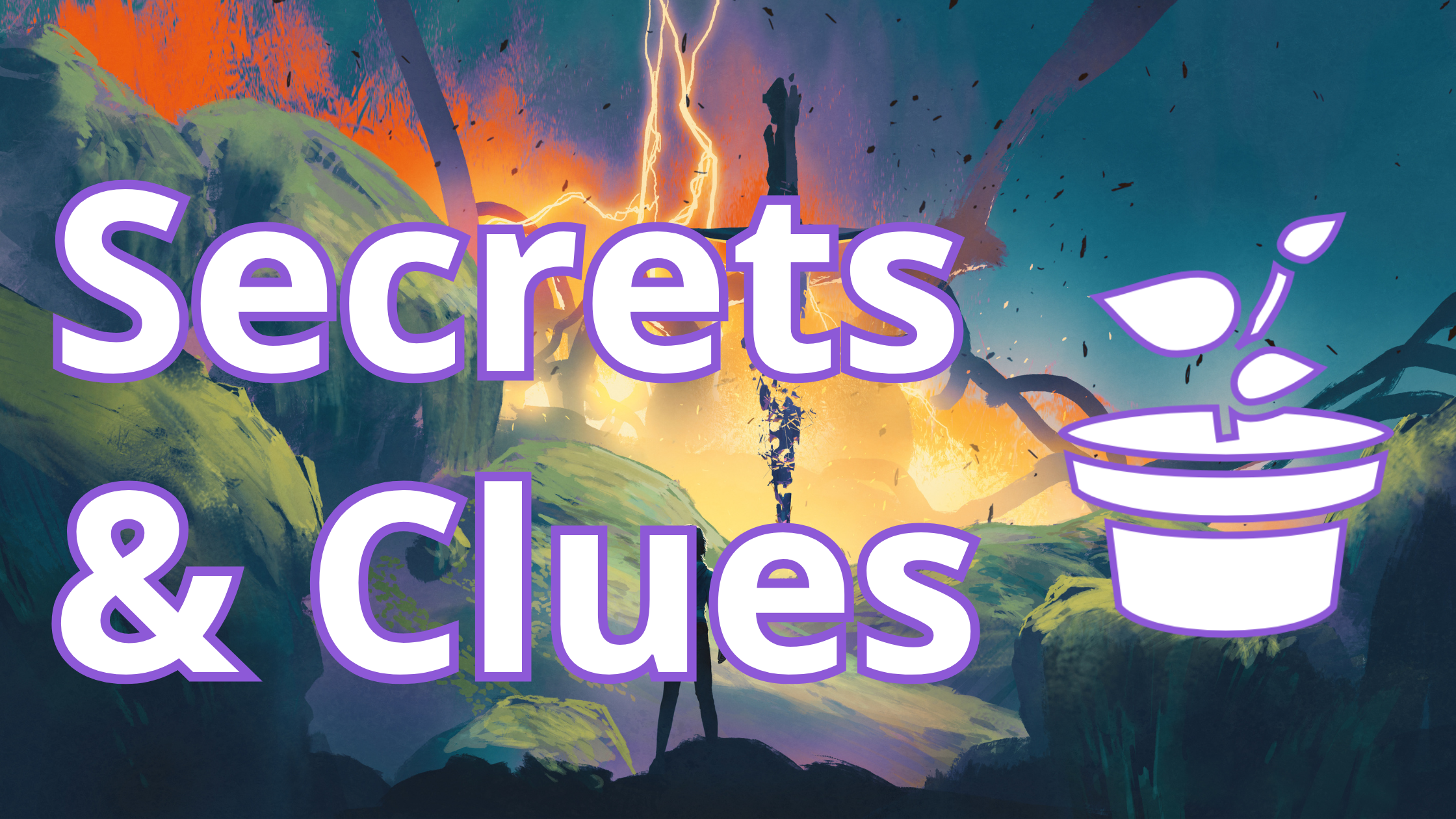Seeding Secrets and Clues
When we seed players with secrets and clues, we pull in aspects of their character and invite exploration.

Secrets and clues are a fantastic way to prepare for running tabletop roleplaying games like Dungeons & Dragons. They're the "short pieces of information the characters might discover during an adventure." But secrets and clues can be used in other ways, too. One dates back to the origins of the game. Let's look at seeding our players with secrets and clues.
Here's a quick reframe for how we'll use these secrets and clues:
"Short pieces of unique information given to each player that may or may not be true."
This isn't a new concept. Older D&D adventures often used legends to seed players with knowledge they could act on.

When done right, seeding secrets and clues gives each player a personal invitation to exploration. But how do we do them right?
Like lore, these seeds can be ignored. Game masters shouldn't force them into the game. As such, these seeds should not contain critical information needed for player characters to succeed. They should be extra flavor to engage with the story and setting.
When crafting seeds, start with the character and end with the adventure. Why does this character know this piece of information? Tap into backgrounds, hometowns, relationships, class features, cultural knowledge, etc. Then connect to the adventure at hand. The secret can focus on a location, quest, NPC, magic item, etc. Some examples:
- Thoradin is from Tallspire, where they believe that the Moon God reveals secret passages at night.
- Cylneth's guild of rogues has reason to believe that the red dragon Thranatax is deaf.
- Xoth's childhood friend always spoke about the Ghost, a mysterious ranger found in the woods where the party's headed.
Whether a seed is true or false is another tool at our disposal. But one we need to be careful with. We might have as many as 40-50% be false for a more uncertain world. Or as low as 10-20% for others. No matter what, these seeds should advance the story and create fun opportunities. A false secret resulting in a "nothing happens" moment is probably a bad secret. Everything is something. Let's revisit the above examples as if they were false:
- Thoradin: If secret passages are not revealed at night, the moon might reveal something else like treasure or a new NPC.
- Cylneth: By the very nature of this secret, if Thranatax is not deaf, we probably have an interesting (and dangerous) situation on our hands.
- Xoth: If the Ghost isn't a mysterious ranger in the woods, the party might find a mythical elk or owl that grants them a boon.
How often we seed secrets and clues with players will depend on the adventure and type of game we want to run. We can seed secrets and clues every session, every level, or every adventure. I prefer to use them when the party reaches a new major location like a region, settlement, or dungeon.
When we seed players with secrets and clues, we pull in aspects of their character and invite exploration. It's born out of a method as old as the hobby itself. With the right guardrails in place, these secrets and clues move the story and fun forward. But they can also be ignored altogether. Invite your players to engage the world through their character by seeding secrets and clues.
Game on.
This work includes material taken from the Lazy GM's Resource Document by Michael E. Shea of SlyFlourish.com, available under a Creative Commons Attribution 4.0 International License.
